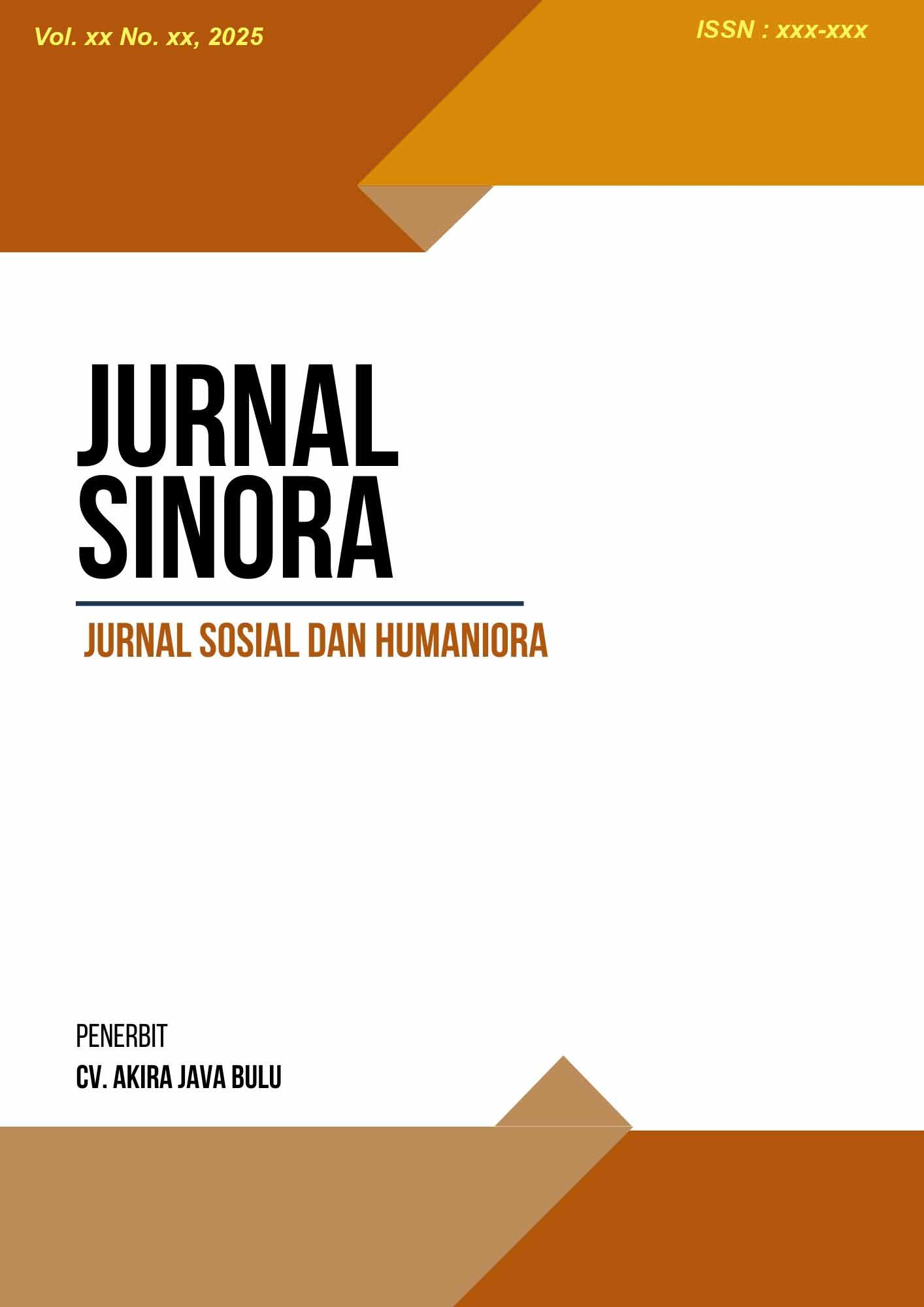Konflik Teori Belajar dalam Pola Belajar Siswa Digital Native
Keywords:
Learning_theories, digital_natives, pedagogy, technology-based learningAbstract
Students' learning habits have changed dramatically due to the rapid development of digital technology, especially among digital natives. However, many teachers still rely on traditional learning theories such as behaviorism and cognitivism, resulting in a disconnect between instructional approaches and students’ learning preferences. This study explores the conflict between established learning theories and the actual learning behaviors of digital native students in secondary schools in Palu City, Indonesia. Using a qualitative descriptive method, data were collected through in-depth interviews with five teachers and seven students, alongside classroom observations and documentation. Thematic coding analysis revealed a significant pedagogical gap: while students prefer interactive, technology-driven, and self-directed learning experiences, most teachers continue to use one-way, teacher-centered instructional methods. This mismatch limits student engagement and reduces the overall effectiveness of the learning process. The findings suggest that current pedagogical strategies fail to align with the characteristics and expectations of digital native learners. The study concludes that to address this challenge, educators must shift toward constructivist and connectivist approaches that integrate digital tools and platforms. A reflective transformation in teaching practices is urgently needed to bridge the gap between theoretical frameworks and the practical demands of learning in the digital age.
Downloads
References
[1] D. S. Ahmar, Muhammad Fath Azzajjad, and A. S. Ahmar, “The Effect of Review Video Making on Problem Based Learning to Spatial Ability,” JINAV: Journal of Information and Visualization, vol. 3, no. 2, 2023, doi: 10.35877/454ri.jinav1441.
[2] J. Lindsay, V. Crouch, and K. Cutcliffe, “Disrupting the traditional academic development model: Technology Demonstrators,” ASCILITE Publications, 2022, doi: 10.14742/apubs.2022.167.
[3] H. Á. Marujo and M. Casais, “Educating for public happiness and global peace: contributions from a Portuguese unesco chair towards the sustainable development goals,” Sustainability (Switzerland), vol. 13, no. 16, Aug. 2021, doi: 10.3390/su13169418.
[4] Y. Dela Carolina, “Augmented Reality sebagai Media Pembelajaran Interaktif 3D untuk Meningkatkan Motivasi Belajar Siswa Digital Native,” Ideguru: Jurnal Karya Ilmiah Guru, vol. 8, no. 1, 2022, doi: 10.51169/ideguru.v8i1.448.
[5] D. Satria Ahmar and M. Fath, “Trend Map: A Bibliometric Exploration of the Utilization of Chemical Education Bulletins in the Digital Age,” 2024. [Online]. Available: http://jurnal.unipa.ac.id/index.php/accej
[6] D. R. Serrano, M. A. Dea-Ayuela, E. Gonzalez-Burgos, A. Serrano-Gil, and A. Lalatsa, “Technology-enhanced learning in higher education: How to enhance student engagement through blended learning,” Eur J Educ, vol. 54, no. 2, pp. 273–286, Jun. 2019, doi: 10.1111/ejed.12330.
[7] S. Quach, P. Thaichon, K. D. Martin, S. Weaven, and R. W. Palmatier, “Digital technologies: tensions in privacy and data,” J Acad Mark Sci, vol. 50, no. 6, 2022, doi: 10.1007/s11747-022-00845-y.
[8] D. S. Ahmar, M. F. Azzajjad, and Muh. Syahrir, “Students’ Representation Ability in Chemistry,” Journal of Applied Science, Engineering, Technology, and Education, vol. 2, no. 2, 2020, doi: 10.35877/454ri.asci22124.
[9] D. S. Ahmar, M. Magfirah, D. Poba, and M. F. Azzajjad, “Gamification Learning integrated with Local Wisdom based on Character Education, is There an Effect on Problem Solving Ability?,” Jurnal Penelitian Pendidikan IPA, vol. 9, no. 9, pp. 7614–7620, Sep. 2023, doi: 10.29303/jppipa.v9i9.4968.
[10] S. Smythe, A. Wilbur, and E. Hunter, “Inventive pedagogies and social solidarity: The work of community-based adult educators during COVID-19 in British Columbia, Canada,” International Review of Education, vol. 67, no. 1–2, 2021, doi: 10.1007/s11159-021-09882-1.
[11] M. F. Azzajjad and D. S. Ahmar, “Analisis Kemampuan Simbolik Siswa pada Materi Kesetimbangan Kimia Menggunakan Model Pembelajaran Discovery,” Jurnal Kreatif Online, vol. 8, no. 3, 2020.
[12] D. Satria, A. 1, and M. F. Azzajjad, “Golden Age and Inclusive Education Pendekatan Neuroeducation dalam Meningkatkan Perkembangan Kognitif dan Sosial Anak Usia Golden Age,” vol. 2, no. 1, 2025.
[13] A. Nofiyanti and Mohammad Zaky Tatsar, “Penerapan Model Pembelajaran (LAPS) – Heuristic Berbantuan Worksheet Untuk Meningkatkan Hasil Belajar Kognitif Peserta Didik SMA Negeri 3 Pasuruan,” Athena: Journal of Social, Culture and Society, vol. 1, no. 1, pp. 1–5, Jan. 2023, doi: 10.58905/athena.v1i1.1.
[14] R. G. K. Pradoto, A. Oktavianus, K. S. Pribadi, I. M. A. B. Rasmawan, and L. D. Wulandari, “Palu Housing Reconstruction Process: Reviewing and Learning after the 2018 Earthquake,” in IOP Conference Series: Earth and Environmental Science, 2022. doi: 10.1088/1755-1315/1065/1/012057.
[15] Marwany, “Islamic Ethnoeducation On Traditional Games From The Kaili Tribe Of Palu City,” IBDA` : Jurnal Kajian Islam dan Budaya, vol. 20, no. 2, 2022, doi: 10.24090/ibda.v20i2.6948.
[16] K. Suarayasa, E. B.-C. Opinion, and undefined 2023, “Behavioral Education Strategy for Consuming Iron Supplements for Young Women in Palu City,” currentopinion.be, vol. 3, no. 1, 2023.
[17] D. Ariany, A. Adhyanti, Y. Eka Cahyani, F. Hafid, R. D. Wahyuni, and D. Ngatimin, “Quality and Pattern of Breakfast Through the GEMPITA PROGRAM at Palu City, Central Sulawesi,” Poltekita : Jurnal Ilmu Kesehatan, vol. 17, no. 3, 2023, doi: 10.33860/jik.v17i3.3435.
[18] M. N. Sangadji, R. Rahmatu, Nursalam, A. Rahman, M. Kurniawan, and M. Musbah, “Strategic environmental assessment in Palu Central Sulawesi reflecting water provision profile based on ecosystem services,” in IOP Conference Series: Earth and Environmental Science, 2023. doi: 10.1088/1755-1315/1253/1/012118.
Downloads
Published
Issue
Section
License
Copyright (c) 2025 SiNORA

This work is licensed under a Creative Commons Attribution-ShareAlike 4.0 International License.






